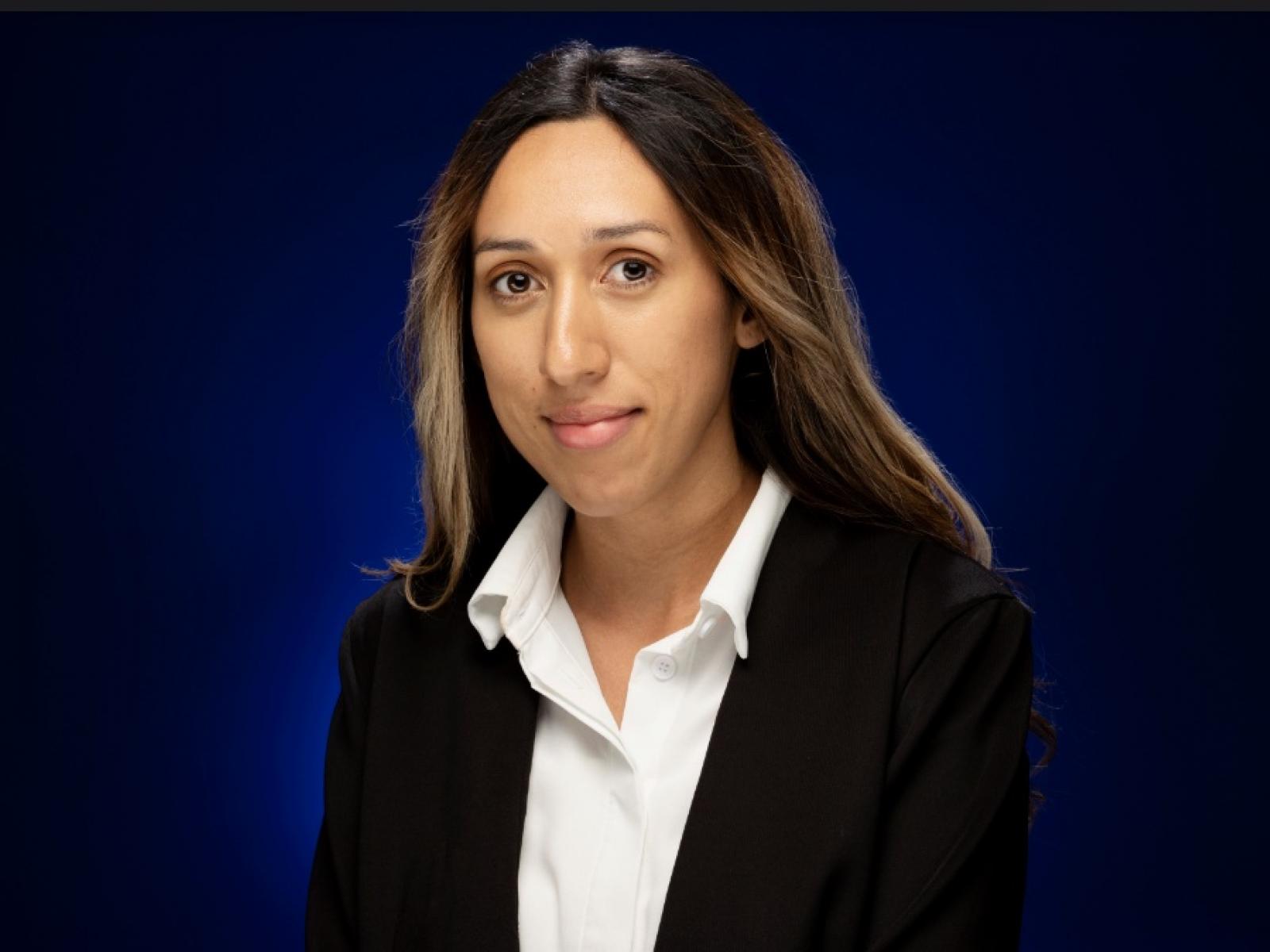The CHIRP partnership provides an innovative way to meet the urgent need for qualified cybersecurity professionals. This collaboration brings together the government and industry with colleges and universities to provide students with a direct two-year pathway for careers in Space Systems Command or with industry partners. By participating in CHIRP, Gutierrez Deniz will be equipped for job opportunities that protect the nation’s vital space-based technologies—from the satellites that feed communication devices to the global positioning systems that enable military operations—from cyber threats.
Gutierrez Deniz, who is a mother of two young children and a first-generation student at California State University, San Bernardino (CSUSB), shared that the innovative model of CHIRP opened the door for her to pursue her goal of working in cybersecurity.
Gutierrez Deniz explained the models like CHIRP, which not only provide financial resources but dedicate resources to delivering mentorship, real-world research opportunities, and the chance to explore career paths within science, technology, engineering, and mathematics (STEM) are powerful for first generation students.
“That’s what I like about this program – it’s not something that you join and just end up on your own to figure out yourself. This program helps you gain experience and skills. It honestly helps you grow,” Gutierrez Deniz said. “It’s surpassed my expectations.”
As part of CHIRP, Gutierrez Deniz is participating in two-years of training, and just completed her first summer in the program. In addition to receiving dedicated mentorship, she also will participate in hands-on research and an internship at Space Systems Command.
“I can’t wait to start my internship!” She shared enthusiastically. “It’s so exciting for me because I’ll be helping to protect space-born assets. I still can’t believe it.”
Cybersecurity workforce talent needs
While cybercrime is a growing threat to critical space-based technologies, there is a global shortage of professionals who are equipped to fill the roles required to protect them. Over the last ten years, Forbes notes that cybersecurity jobs worldwide grew 350 percent (2013-2021). In the United States, there are approximately 750,000 open cybersecurity jobs, but only enough qualified workers to fill 400,000 of them. Developing pathways for a future diverse workforce in cybersecurity is central to the goals of CHIRP.
“I’m the oldest daughter in a Hispanic family, so a value for me was always wanting to care for my family,” Gutierrez Deniz added. “I actually ended up pausing school for a bit because I thought it was kind of impossible. But opportunities like this are the things that help you out. I want to show my children that everything is possible.”
Cybersecurity CHIRP student presentations
As part of the SSC Cyber Expo 2022, Gutierrez Deniz and her cohort members will be presenting on the work they’ve done in the first year of the CHIRP program. As part of CHIRP, students are exposed to a variety of focuses within cybersecurity in order to introduce potential career paths. This comes together in tangible ways with the projects that they tackle.
“I’m going to be presenting on a project we worked on this summer. We participated in a boot camp as part of CHIRP. We had mentors who guided us each step of the way so we could develop skills, learn to present, and learn more about cybersecurity,” she explained. “We all worked on different parts and combined toward one goal.”
When asked what advice she would share for other first-generation students and what has motivated her on this journey, she explained: “Fear always holds us up…that holds us back. If you don’t try it, you’re never going to know the outcome,” she said. “So that’s what I’ve been going with.”
About student opportunities at PNNL
PNNL welcomes hundreds of high school, undergraduate, and graduate students annually through a suite of programs, to develop their research skills, to receive mentoring from leading experts, and to grow STEM career opportunities. Interested students can learn more on the PNNL STEM Internships website.


